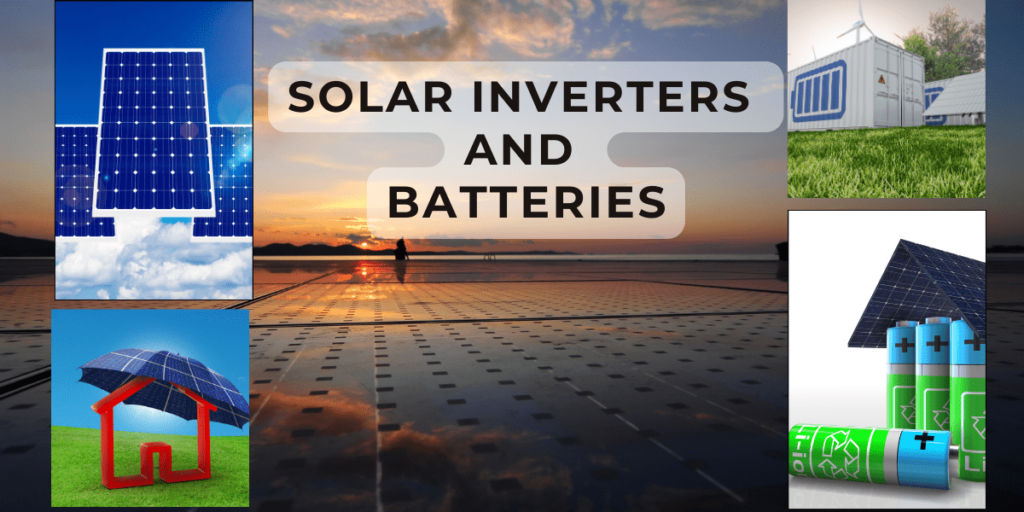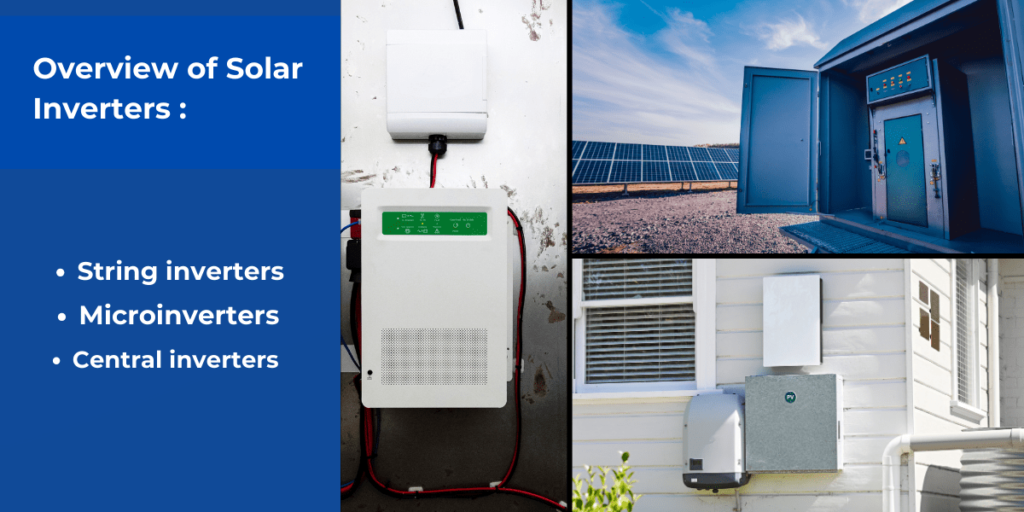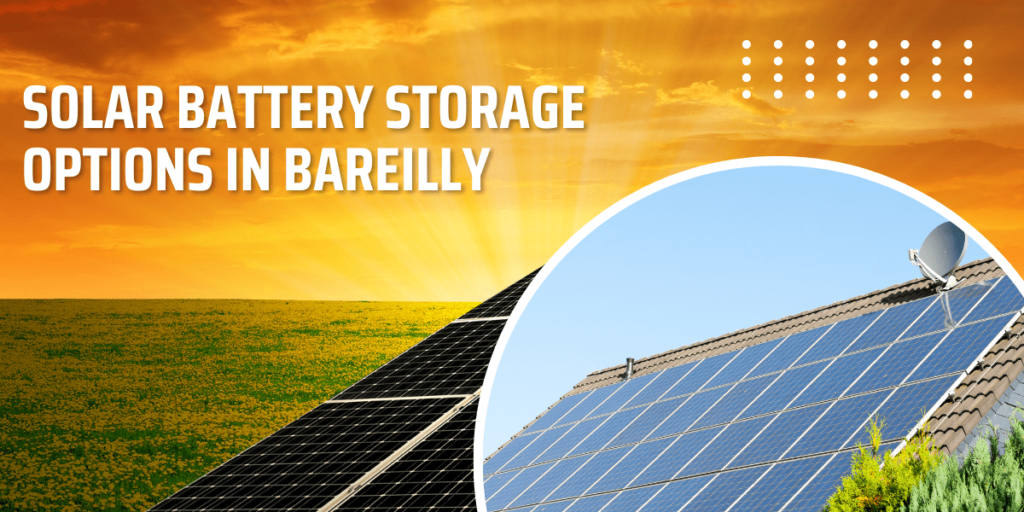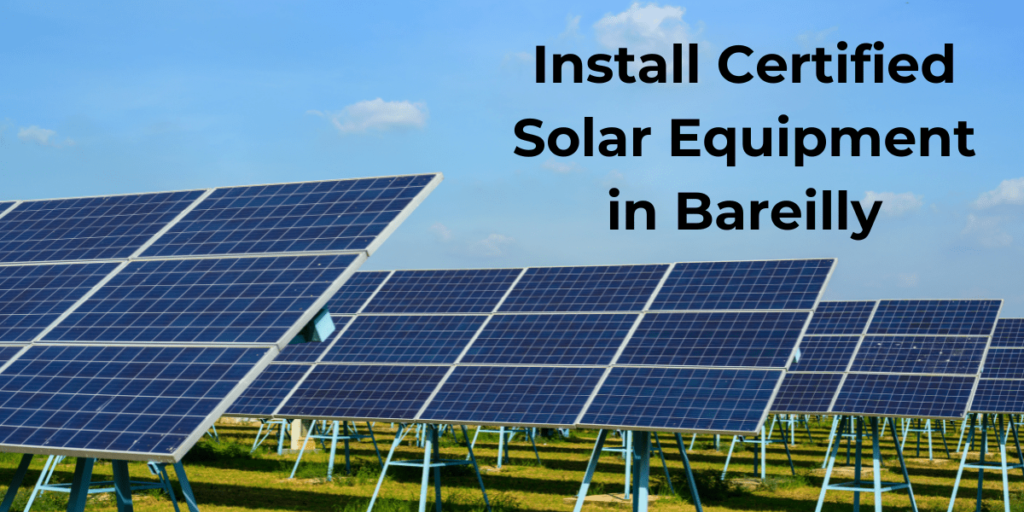Solar power is gaining tremendous traction in Bareilly, driven by rising electricity costs, improved technology and supportive government policies. When installing a rooftop solar PV system, two of the most important components are the solar inverter and battery. The inverter converts the DC electricity from solar panels into usable AC power, while batteries provide backup and enable power use at night.

In this comprehensive guide, we will cover all key aspects of solar inverters and batteries specific to Bareilly – how they work, types of inverters/batteries, top products available locally, costs, sizing calculations, installation, maintenance and more. Whether you are planning to install rooftop solar for your home or business in Bareilly, this article will provide you with all the information you need to make the right decisions regarding solar inverters and batteries.
Table of Contents
What is a Solar Inverter?
A solar inverter, also known as PV inverter, converts the variable direct current (DC) output from solar panels into alternating current (AC) that can power home appliances. It is a critical component of any grid-tied or off-grid solar system. The main types of solar inverters used are:

- String inverters: Converts DC from a string of solar panels into AC. 1-2 inverters per system.
- Microinverters: Converts DC from each solar panel into AC. No central inverter needed.
- Central inverters: Large capacity inverters for commercial solar projects and solar farms.
Factors to consider when selecting inverters for your Bareilly home or business include:
- System size and number of panels
- Phased vs. single phase electricity requirement
- On-grid, off-grid or hybrid system
- Warranties and reliability of brand
- Certifications like IEC 61683 for efficiency and performance
Some of the most reputed inverter brands available in Bareilly are Sungrow, ABB, Voltronic, Ador, Luminous, Su-Kam, Microtek and more. Always opt for established brands that offer technical support and service.
For More Details
How Does a Solar Inverter Work?
The solar inverter works by:
- Converting DC Power: The solar panels generate DC power, which is sent to the inverter.
- Converting to AC Power: The inverter converts the DC power into AC power, which is usable in homes and businesses.
- Monitoring Performance: The inverter monitors the performance of the solar power system, ensuring that it is running efficiently and safely.
- Grid Synchronization: The inverter synchronizes the AC power with the grid frequency, allowing excess energy to be fed back into the grid.
Types of Solar Inverters
- String Inverters: These are the most common type of inverter, suitable for small to medium-sized solar power systems.
- Microinverters: These are used for smaller solar power systems and offer more flexibility and monitoring capabilities.
- Power Optimizers: These are used in conjunction with string inverters to optimize energy production at the panel level.
Benefits of Solar Inverters
- Efficient Energy Production: Solar inverters ensure that the energy generated by the solar panels is converted efficiently into usable AC power.
- Reliability: Solar inverters are designed to operate reliably for many years, with minimal maintenance required.
- Safety: Solar inverters ensure that the energy generated is safe and meets the required safety standards.
- Monitoring and Tracking: Solar inverters provide real-time monitoring and tracking of the solar power system’s performance
Solar Battery Storage Options in Bareilly
Adding a battery bank enables storing of excess solar power generated during the day for use at night. It provides backup power during grid outages and optimizes solar system performance. The main battery technologies are:

- Lead-acid batteries: Mature, economical option capable of deep discharge
- Lithium-ion batteries: Lightweight, long-lasting, higher efficiency and low maintenance
- Sodium-sulfur and flow batteries: Newer technologies still maturing in the Indian market
Key factors to consider for solar batteries in Bareilly are capacity, depth of discharge, number of cycles, operating temperature range, certifications and battery management system. Popular solar battery brands include Luminous, Exide, Okaya, Amara Raja, Su-Kam, Microtek, Delta and more.
Charging Controllers & Voltage Stabilizers
A solar charge controller regulates how batteries are charged from solar panels and prevents overcharging. It is essential in any solar power system with batteries to protect the batteries and ensure efficient charging.
Voltage stabilizers help provide stable AC voltage output from the inverter by minimizing fluctuations. They add a layer of protection for your appliances and equipment.

Cost of Solar Inverters and Batteries
Solar inverters for home and commercial systems in Bareilly typically cost Rs 15,000 to Rs 90,000 depending on the capacity. String inverters for 3-5 kW rooftop solar systems cost around Rs 30,000-45,000. Large 20 kW or above central inverters can cost over Rs 1 lakh.
| Capacity | Features | Technical Specifications | Price |
|---|---|---|---|
| 1 kVa | 5 years warranty, extendable to 10 years | Input DC – 50 to 400 V<br>Output Current – 4.3 to 6.1 A | ₹16,000 to ₹17,500 for a 1 Kva solar inverter with battery |
| 2 kVa | DC reverse polarity, protection from short-circuit. | Input DC – 50 to 400 V<br>Output current – 8.7 to 12.2 A | ₹16,200 to ₹18,000 |
| 3 kVa | Transformer, 5 years warranty period (extendable to 10 years) | Input DC – 100 to 500 V<br>Output current – 13 to 15.7 A | ₹17,000 to ₹18,800 |
| 5 kVa | Offers stable output, strong and sturdy, 5 years warranty period (extendable to 10 years) | Input DC – 100 to 500 V<br>Output current – 21.7 to 23.8 A | 1 phase – ₹28,000 to ₹33,000<br>3 phase – ₹50,000 to ₹55,000 |
| 10 kVa | Transformerless, 5 years warranty period (extendable to 10 years), Wi-fi and mobile connectivity | Input DC – 200 to 800 V<br>Output current – 14.5 to 16.7 A | ₹57,000 to ₹63,000 |
For batteries, indicative costs are:
- Lead acid – Rs 15,000 per kWh
- Lithium-ion – Rs 25,000 to Rs 40,000 per kWh
- Battery management systems – Rs 5000 and above
Always get quotes from multiple solar equipment suppliers in Bareilly to get the best rates. The costs may vary based on brand, specifications and supplier margins.
Sizing Solar Inverters and Batteries
Correctly sizing the solar inverter and battery bank is crucial for optimal system performance. Here are some key sizing guidelines:
Inverter Sizing:
- For grid-tied systems, inverter capacity should be 90-100% of total solar panel wattage.
- For off-grid/backup systems, inverter capacity can be 25-30% lower than total panel capacity.
- Keep provision for connecting additional panels in future while selecting inverter.
Battery Sizing:
- For backup systems – Battery capacity needed = Appliance load x Backup time required
- For off-grid solar – Batteries should be able to power essential loads for 3-5 days without sunlight.
- Typically 100 Ah lead acid battery provides 1 kWh of capacity.
Install Certified Solar Equipment in Bareilly
When installing your solar power system, always opt for certified solar panels, inverters and batteries from reputed brands. Certifications to look for are IEC 61215 and IS 14286 (Solar PV Modules), IEC 61683 (Inverters) and BIS (Batteries).

Ask installers for product datasheets, test reports and certifications before purchase. This ensures efficient, trouble-free performance over the long run.
Maintenance Tips for Solar Inverters and Batteries
Simple maintenance goes a long way in extending the life of your solar power system. Key tips include:

Inverters:
- Keep inverter area clean, dry and ventilated
- Check error logs and alerts periodically
- Get annual servicing done by an engineer
Batteries:
- Monitor battery voltage and electrolyte levels
- Get equalization charging done quarterly
- Keep batteries clean and corrosion-free
- Replace weak batteries to avoid mismatch
Additionally, ensure panels are kept clean, check all wiring connections routinely and keep an eye out for abnormalities or damage to any system components. Taking proper care will help your solar PV system perform to its optimal potential for over two decades.

Conclusion
Installing quality solar inverters and batteries sourced from reputed suppliers is key to a well-functioning and financially beneficial rooftop solar system. We hope this guide will help Bareilly residents make informed decisions about solar inverters, batteries and equipment for their home or business. Feel free to reach out with any other questions!
Frequently Asked Questions
Here are some common queries regarding solar inverters and batteries in Bareilly:
For a 5 kW solar rooftop system, you should install a 5 kW single phase grid-tie inverter or microinverters totaling 5 kW capacity.
A 1 kWh lithium-ion battery will provide backup for 3-5 hours for basic appliances like lights, fans, TV etc depending on load. Higher capacity is required for ACs, geysers etc.
A good quality 3 kVA solar grid-tie inverter from reputed brands costs approximately Rs 35,000 – Rs 45,000 in Bareilly.
Definitely lithium-ion batteries. They don’t require water refilling, last 3x longer and have no sulfation issues compared to lead acid.
Annual servicing by a solar technician is recommended, along with basic maintenance checks every 3-6 months by the owner. This prevents issues and keeps the system performing optimally.
The lifespan of a solar inverter is typically 10-15 years.
Consider factors such as your energy requirements, budget, and the type of solar power system you have.

